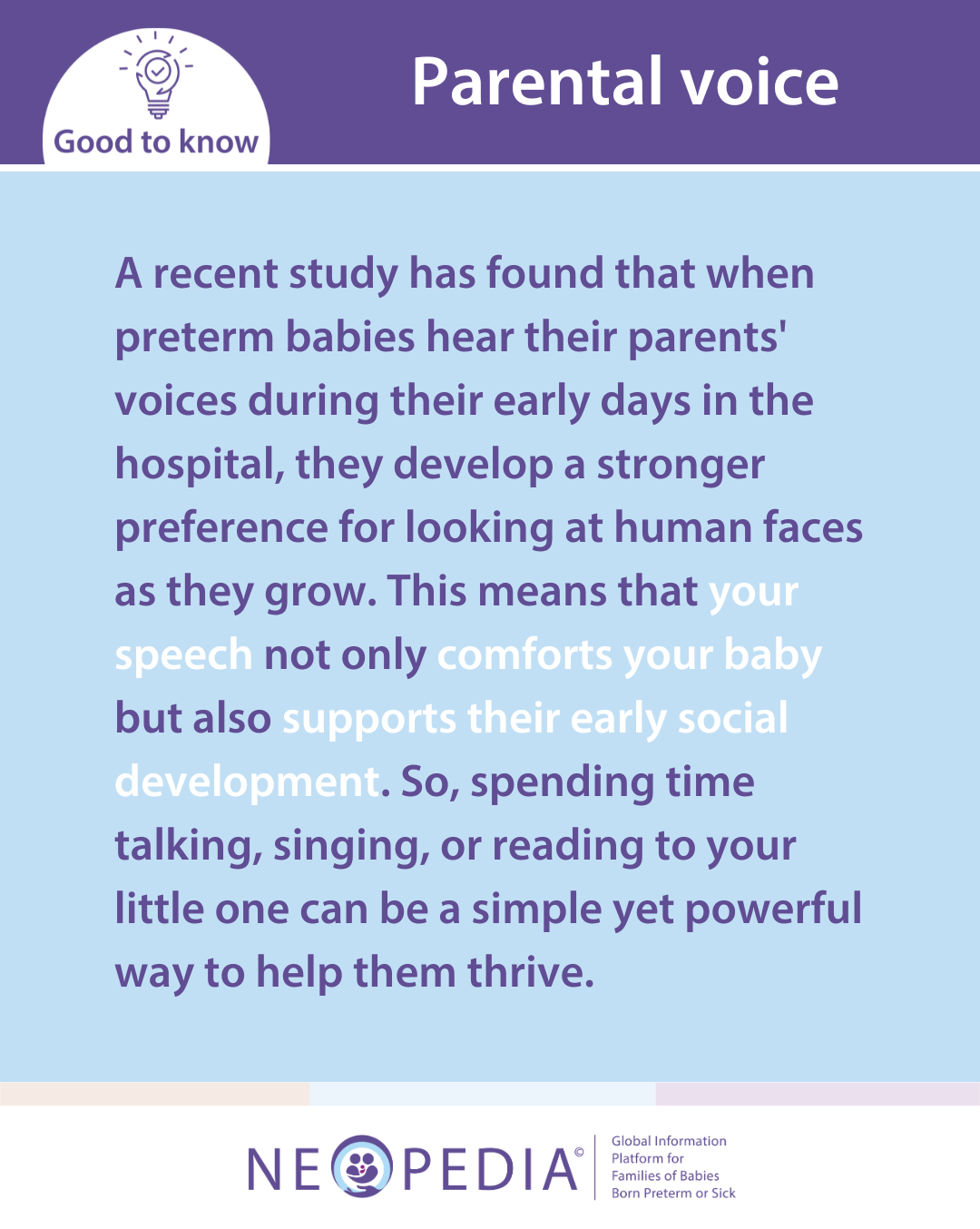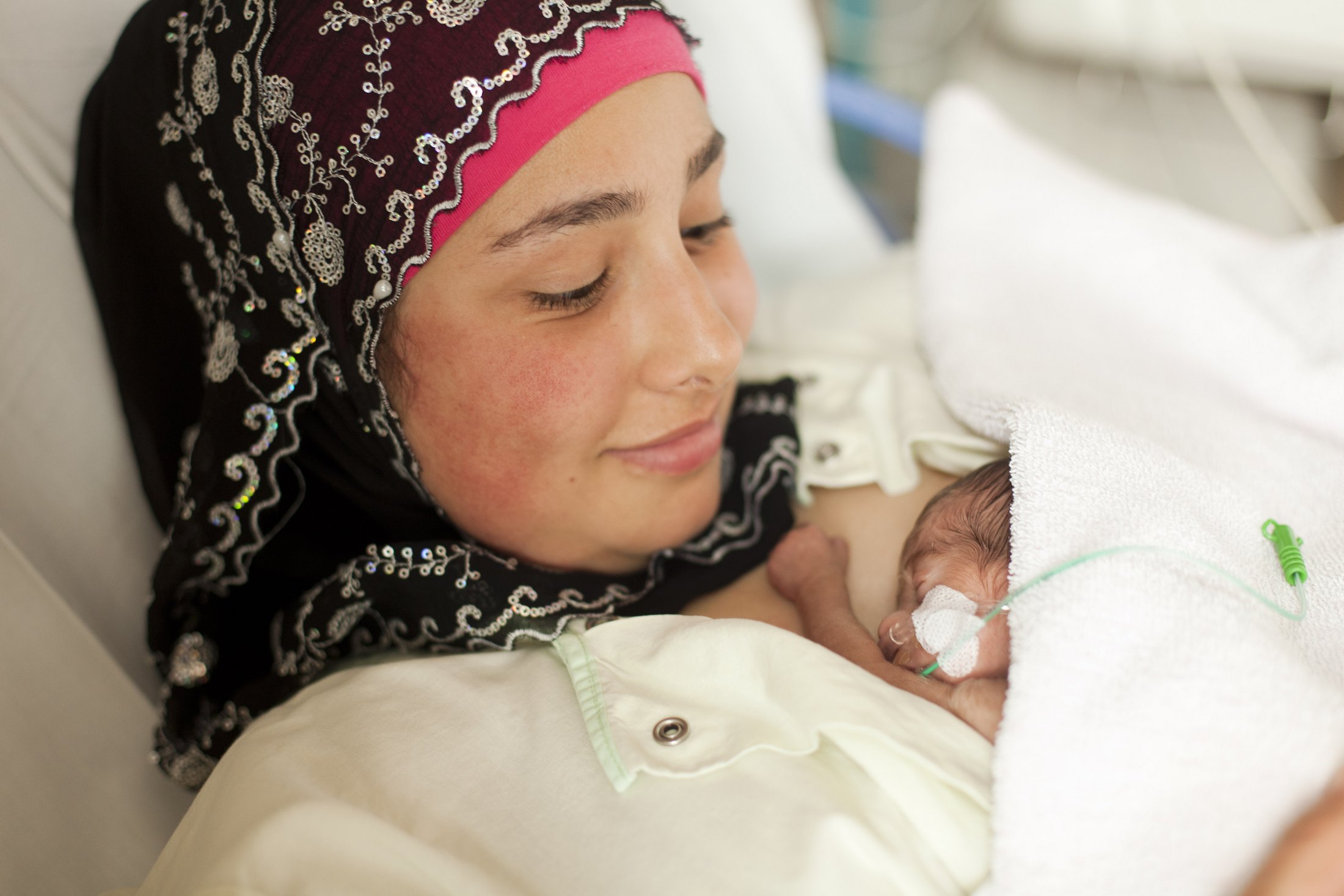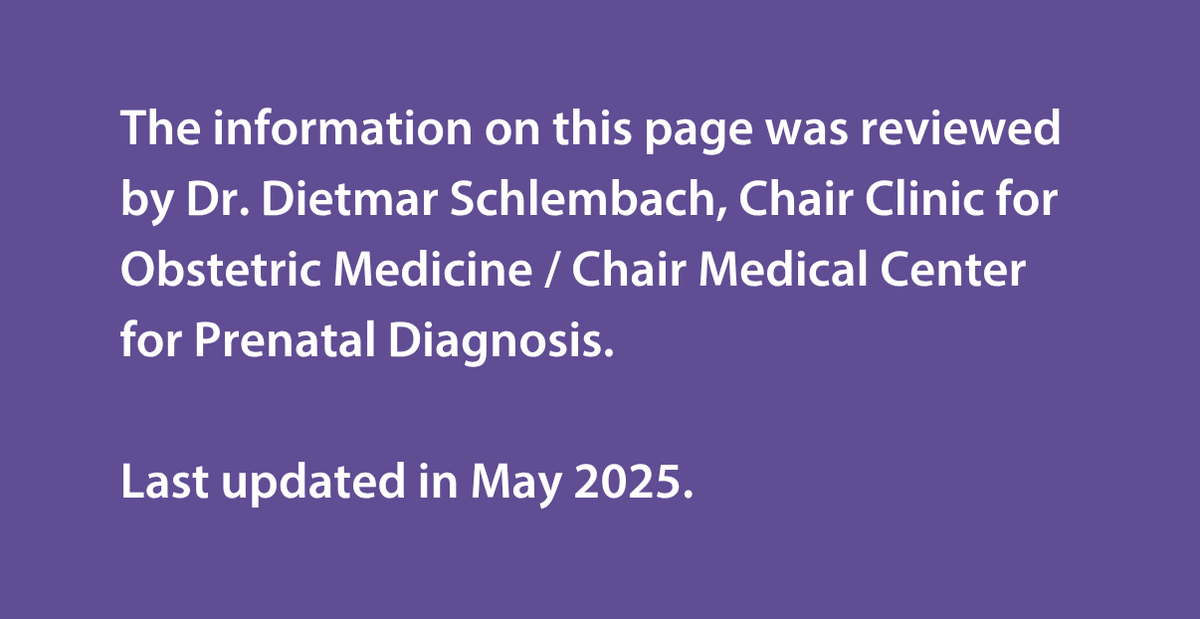
Immediately after birth, the first touch between parents – or if not possible for some reason, other caregivers – and their newborn is important for creating and strengthening a close connection (bonding). Regular interactions between you and your baby, along with daily care routines, are vital for nurturing a strong and secure bond.
These early interactions can take many forms, from talking to your baby, practicing comfort holding⍰, to holding them skin-to-skin in a practice known as Kangaroo Mother Care (KMC). Breastfeeding and simply spending time observing your baby also contribute to this bond. Even looking at a picture of your baby can help strengthen the connection.
What is Kangaroo Mother Care (KMC)?
Kangaroo Mother Care, where the baby is placed on the parent's bare chest, is a wonderful way to promote bonding, but it is important to ensure the baby's health is stable first. It is best to wait until the baby is waking up before beginning Kangaroo Mother Care. Make sure you are in a comfortable position, sitting or semi-reclined, and that both you and the baby are undressed except for a diaper (nappy).
Healthcare professionals may recommend covering the baby's head and feet to keep them warm. When transferring the baby, nurses will take care of any tubes or lines and wrap them in a blanket. The baby should be positioned with flexed arms and legs, and the head turned to the side with the chin up. Parents can support the baby's head and back with their hands. If the baby needs to return to an incubator, it may take time for them to settle. You can help by staying nearby, speaking softly, gently touching the baby's head, or leaving a cloth with your scent. Throughout, the neonatal unit team will monitor the baby's vital signs to make sure they are well.
While every baby naturally forms a bond with their parents, the quality of this connection can impact the child's social and emotional development later in life. Separating parents and baby soon after birth can disrupt this bonding process, potentially affecting the child's behavior in the future.
It is important to consider your baby's sleep-wake patterns. Healthcare professionals will guide you on how to prepare for Kangaroo Mother Care, such as wearing easy-to-open clothes, tying back your hair, and washing your hands. You can talk or sing to your baby and even use a hand mirror to see them during skin-to-skin time.

What are the most important benefits of Kangaroo Mother Care?
Research shows that skin-to-skin contact between father and baby provides similar benefits. This practice is now widely adopted by hospitals and supported by the World Health Organization (WHO).
What can you do if your baby is too unwell for Kangaroo Mother Care?
Comfort holding is a gentle method for you and your baby to bond. It involves cradling your baby in the incubator with calm, steady hands, which can be more comforting than stroking or massage. It is a way to share loving touch even when your baby is not ready to be held. Ask your baby's nurse about comfort holding. Together, you can observe your baby for cues indicating when and how to practice it.
Comfort holding can:
Remember to:
Comfort holding is a gentle method of bonding with your baby, providing warmth and reassurance to both of you.

